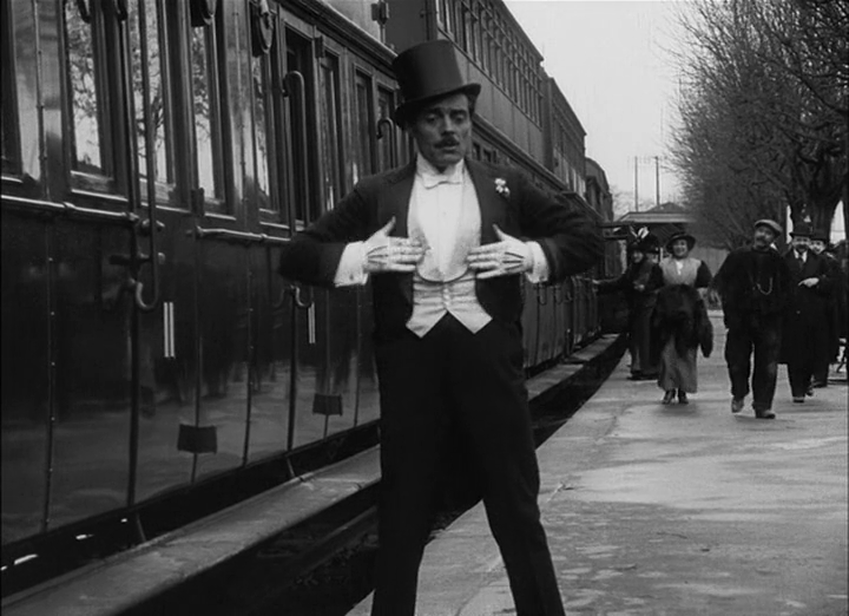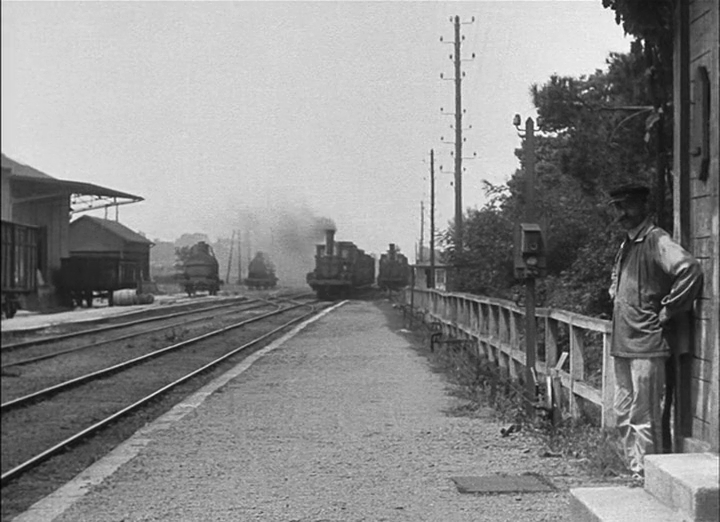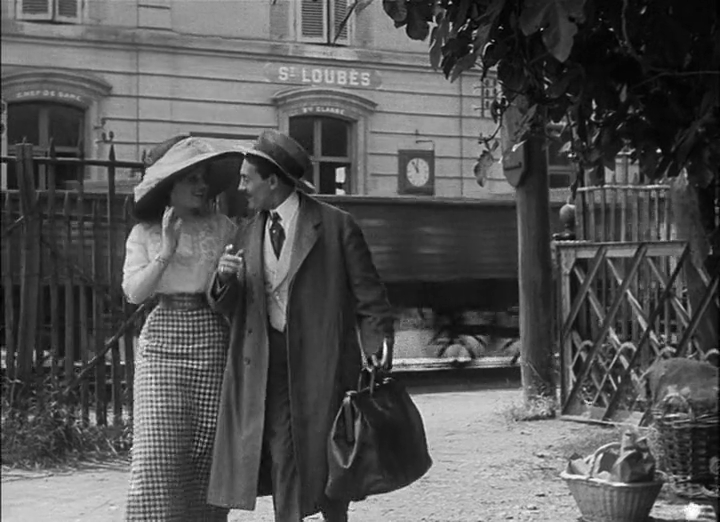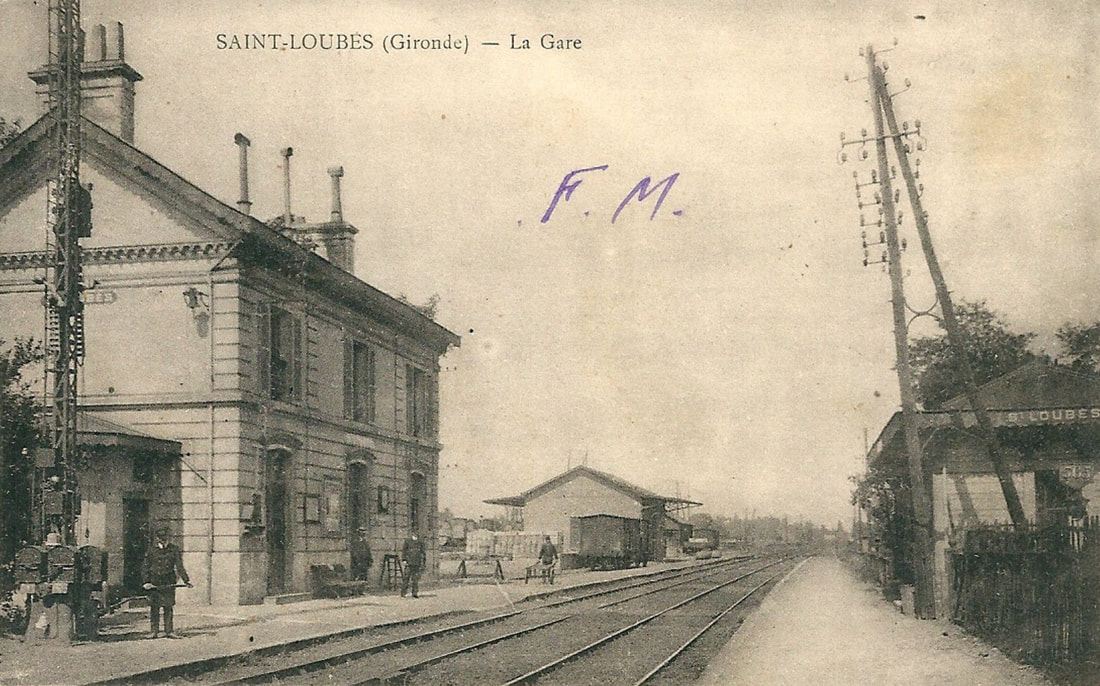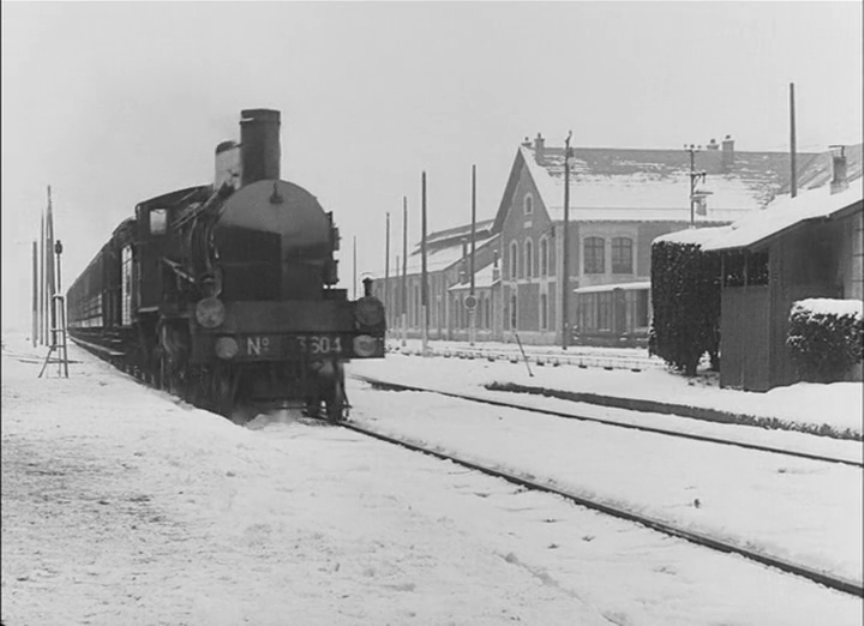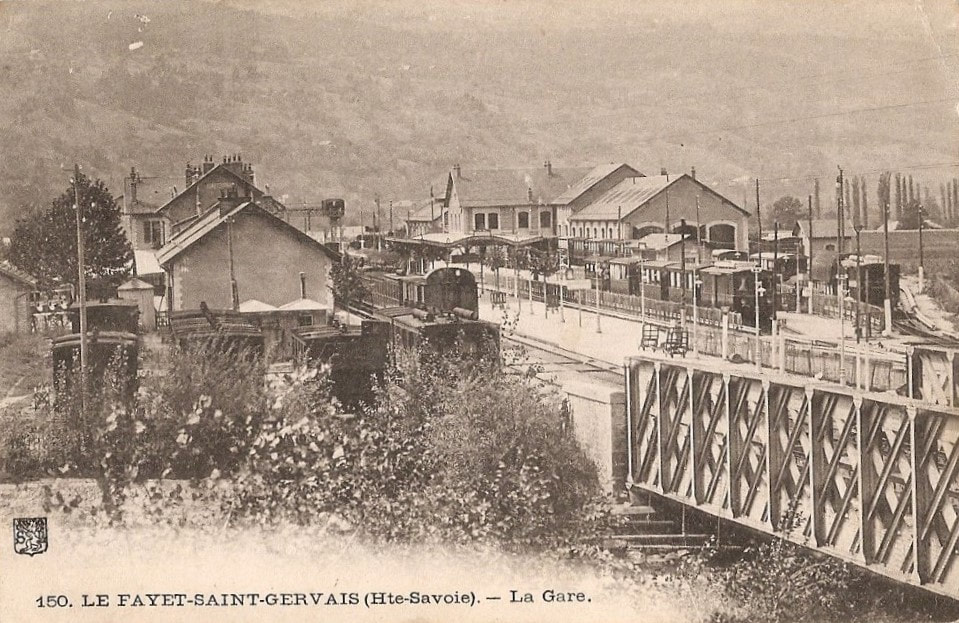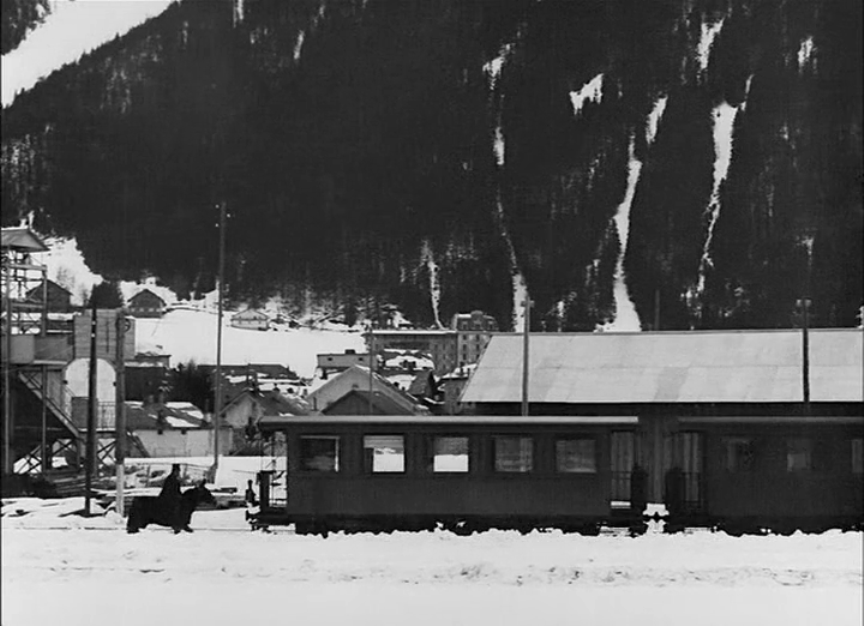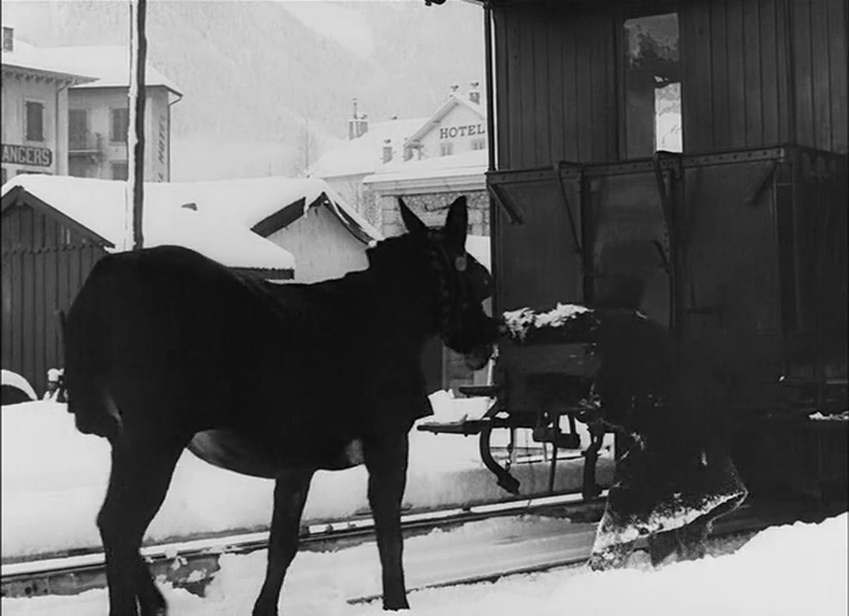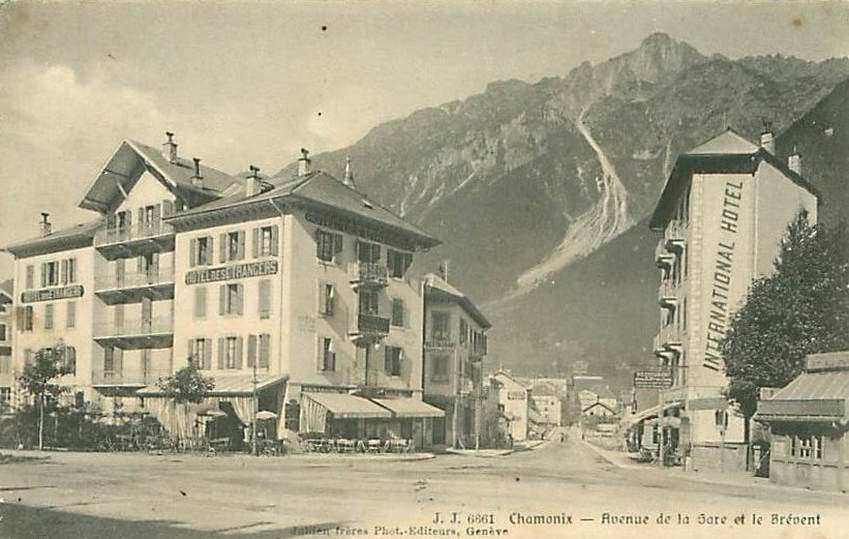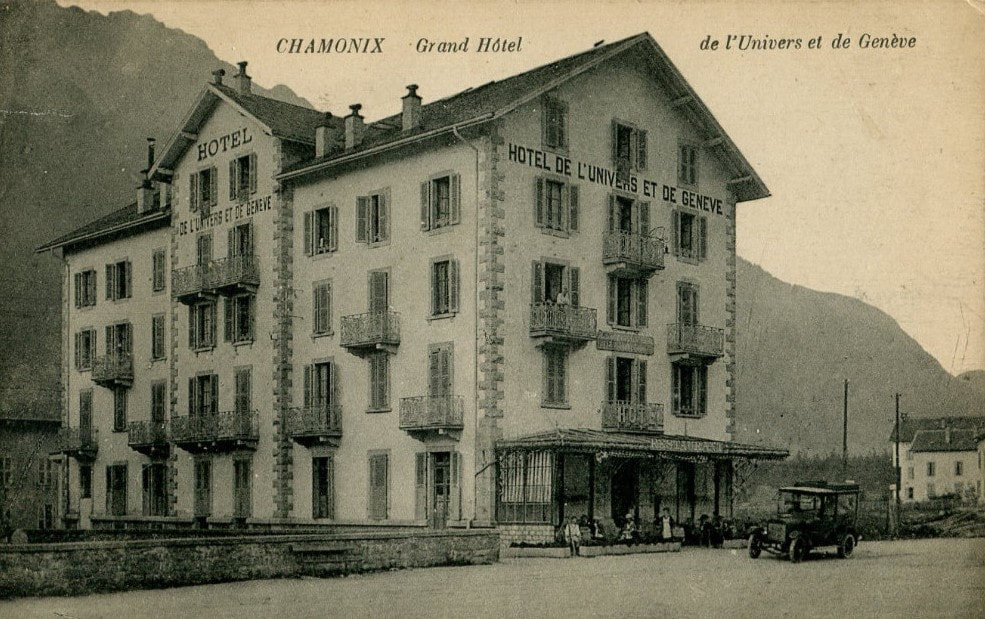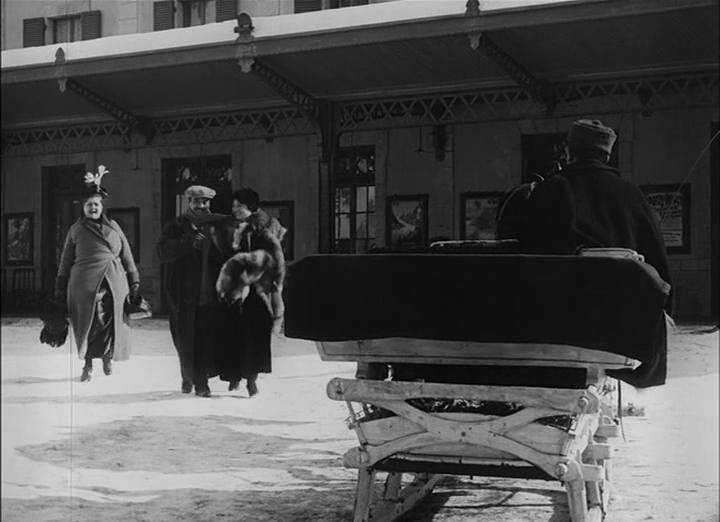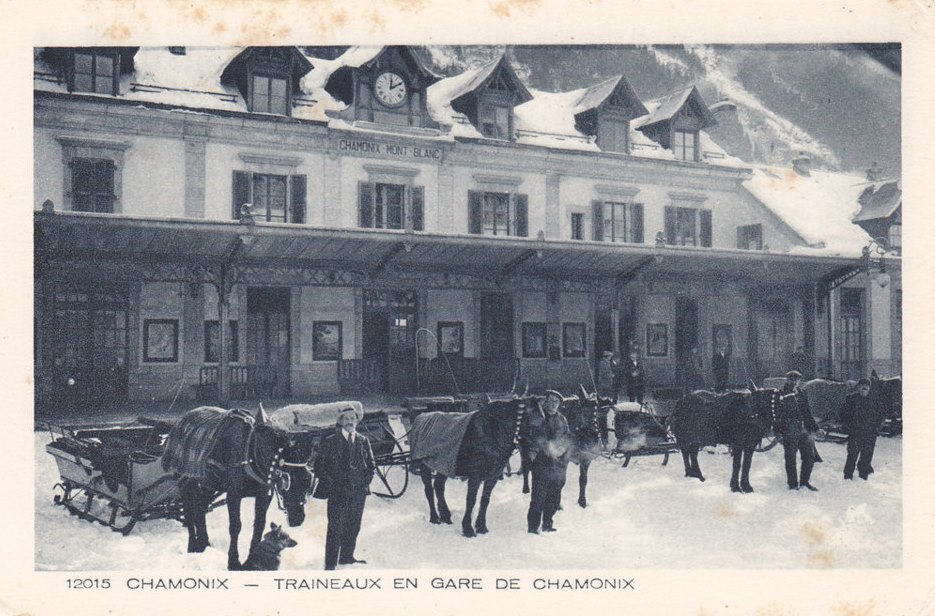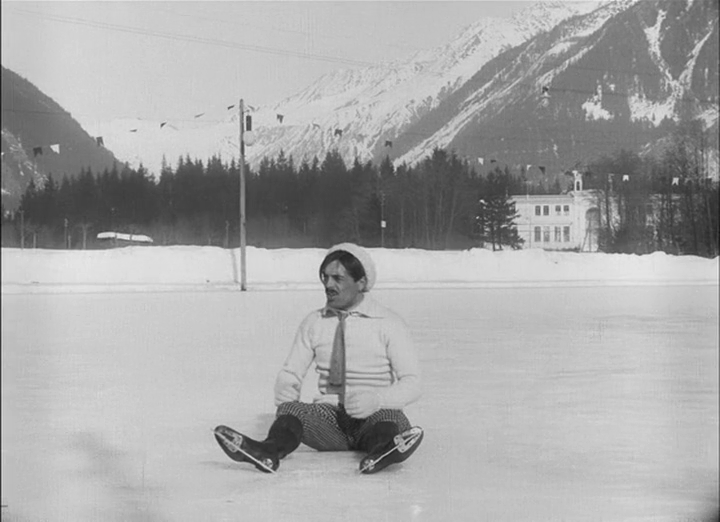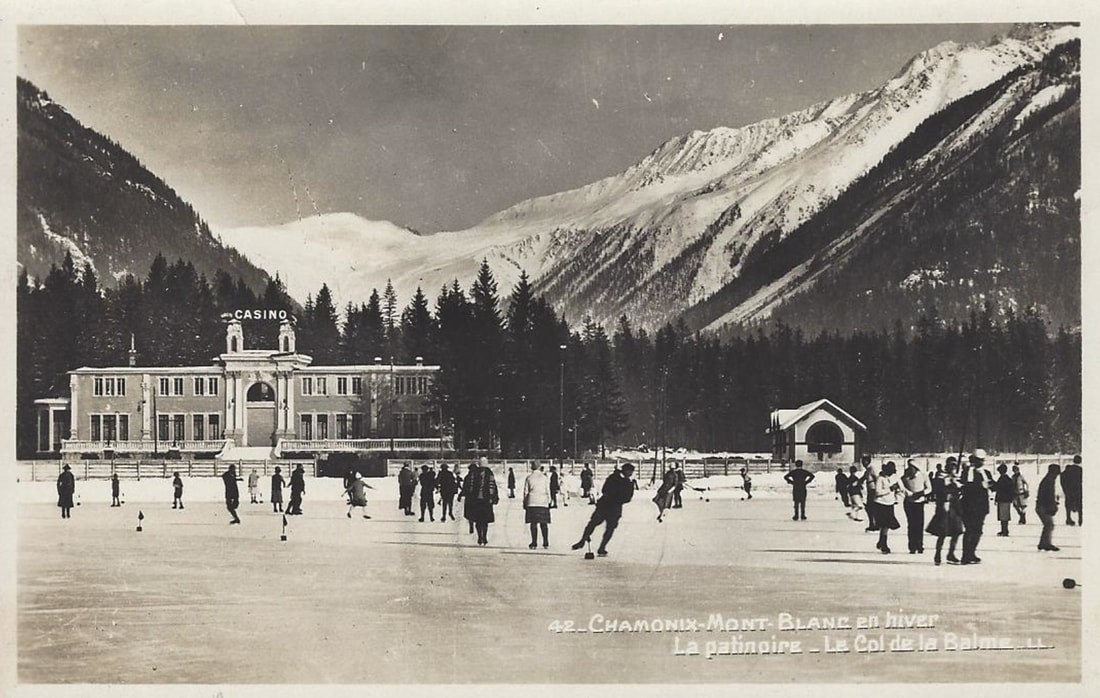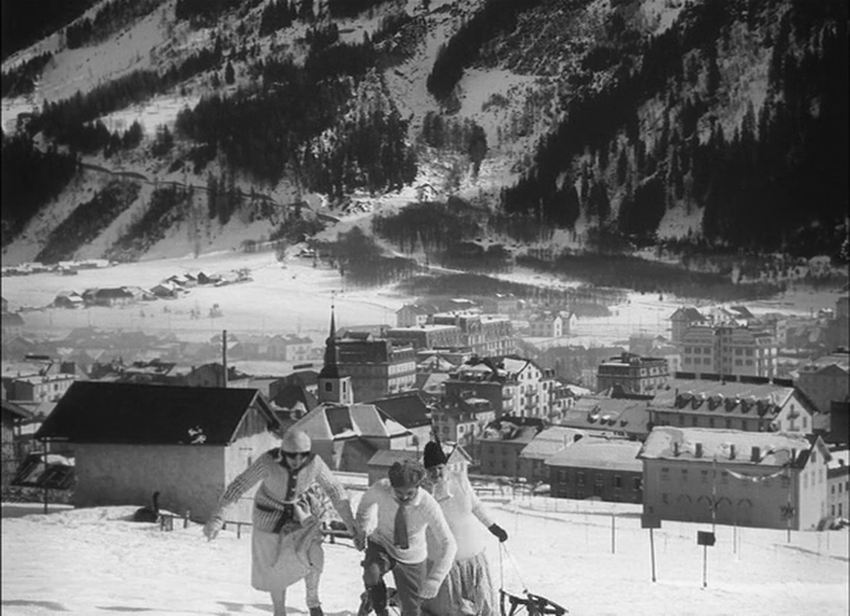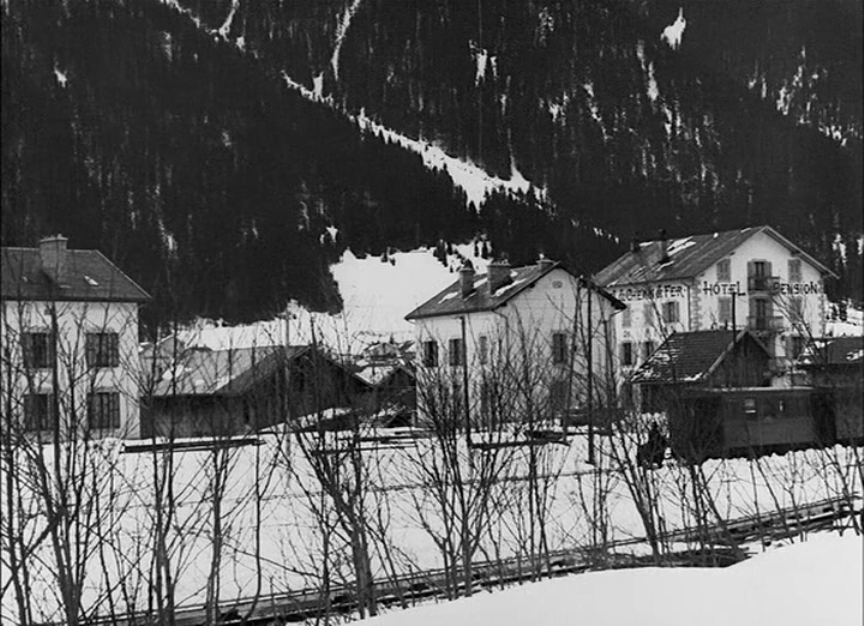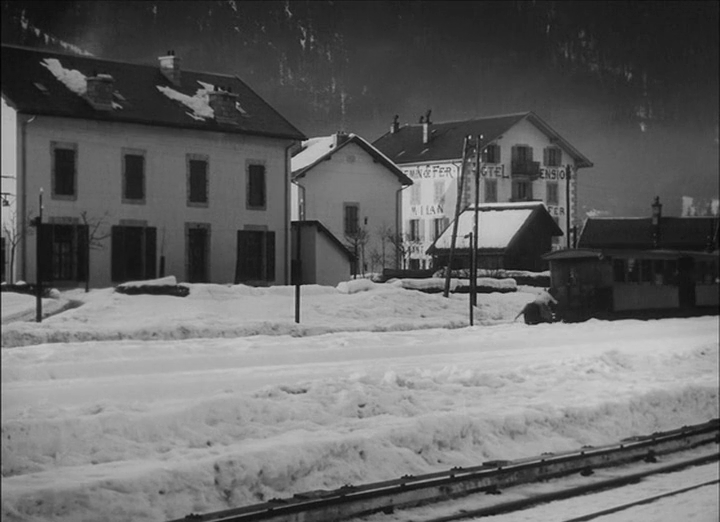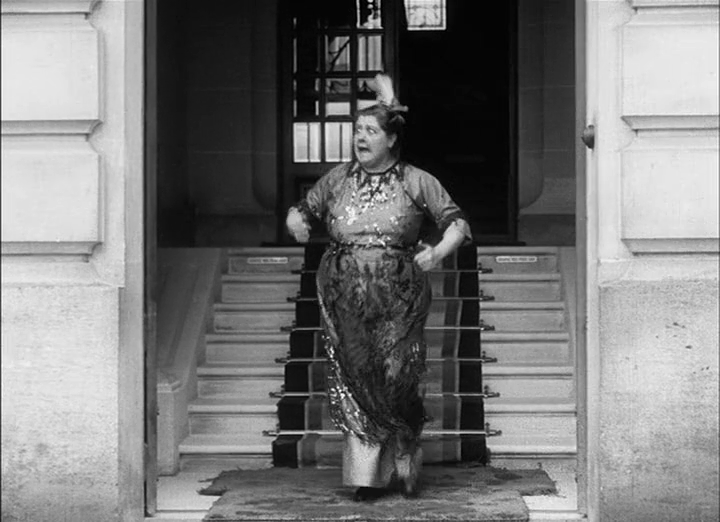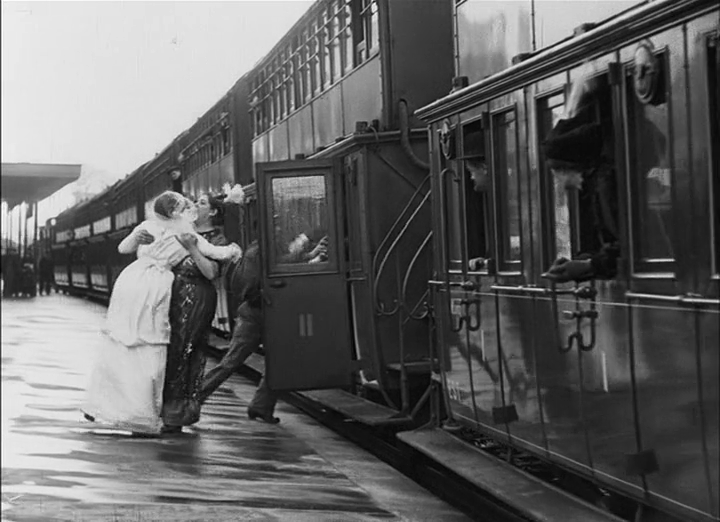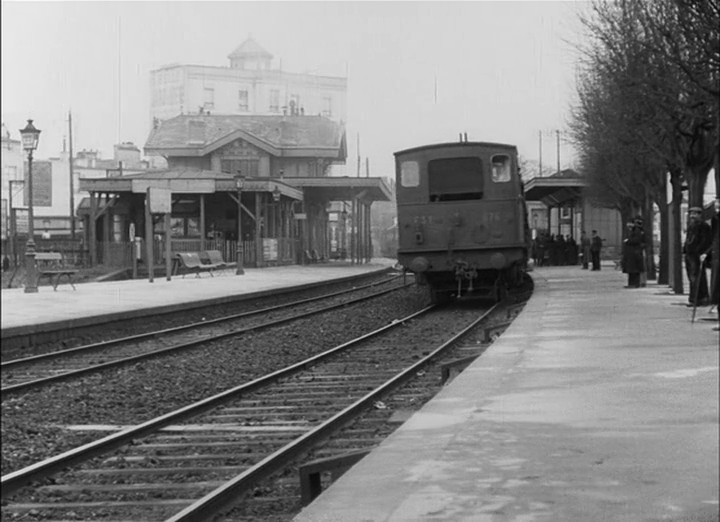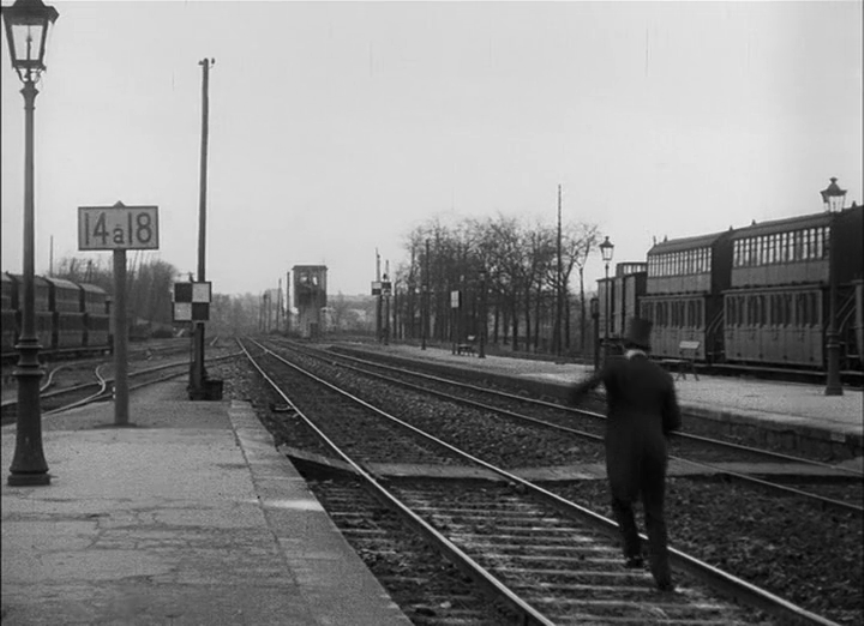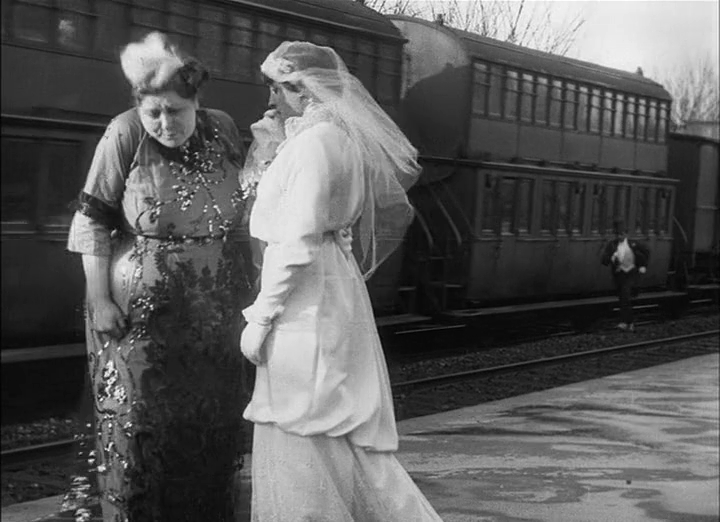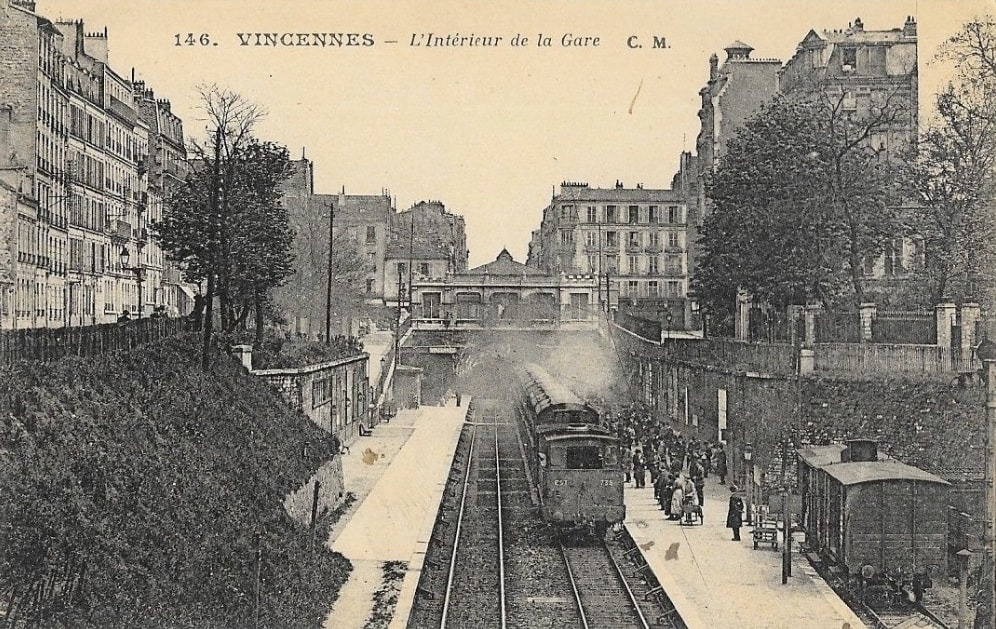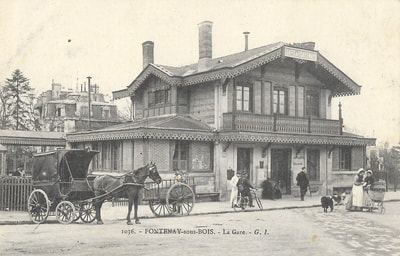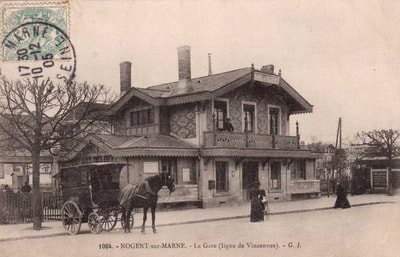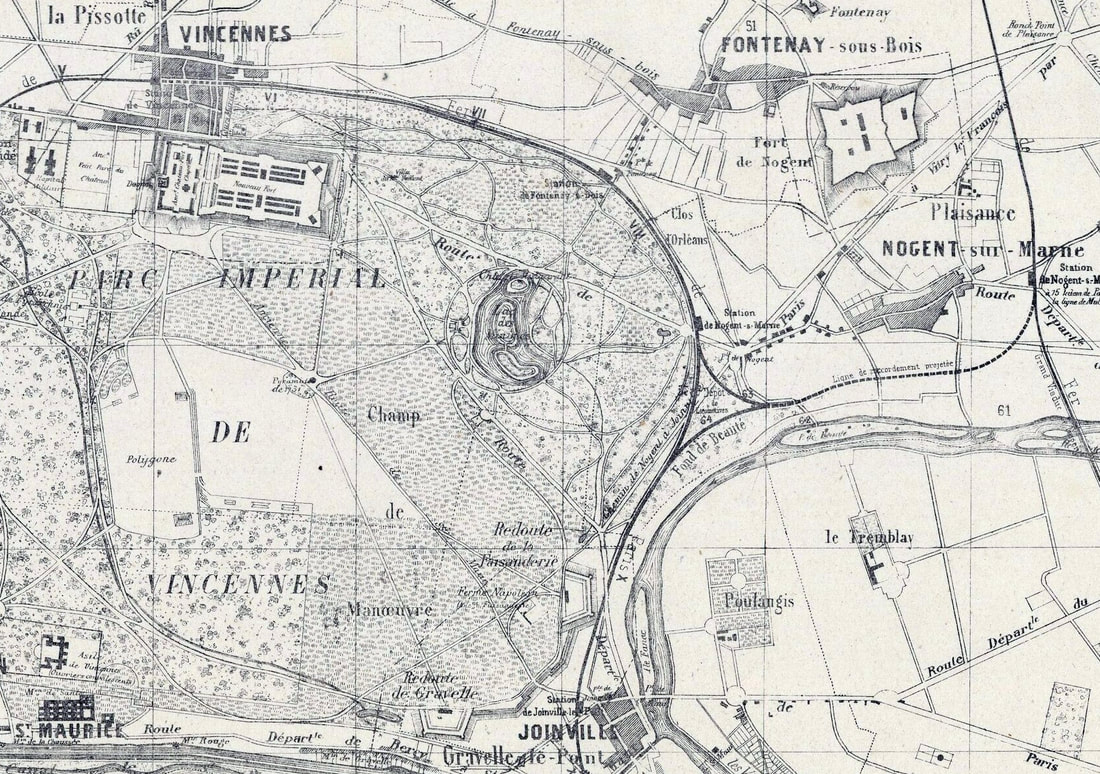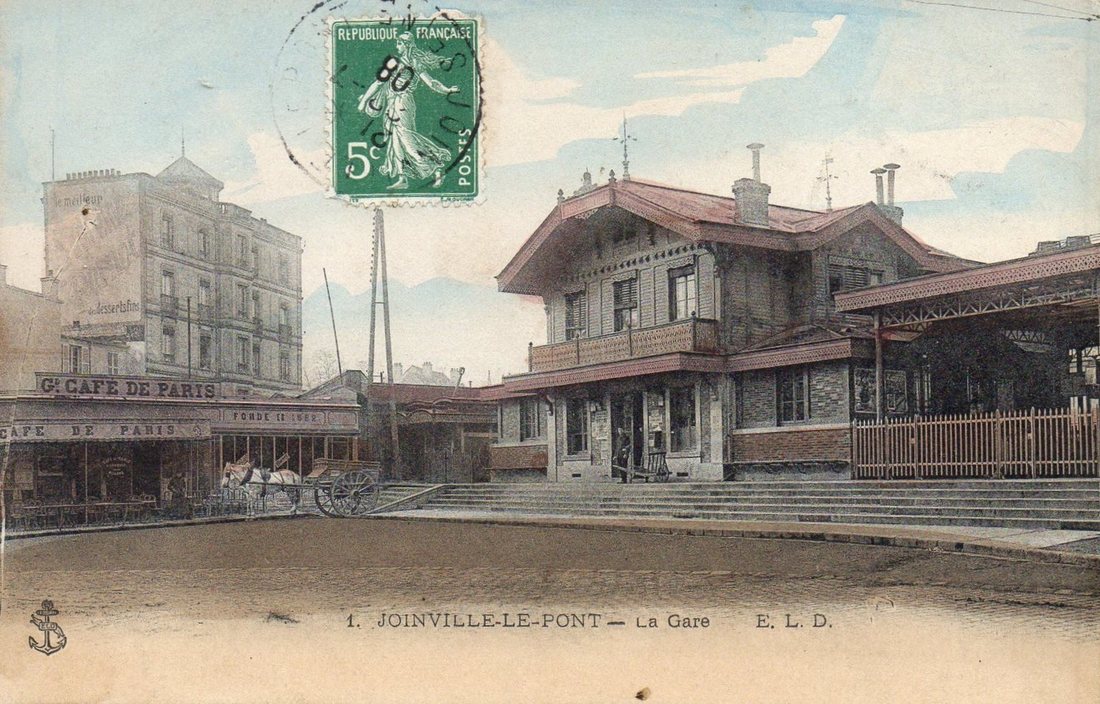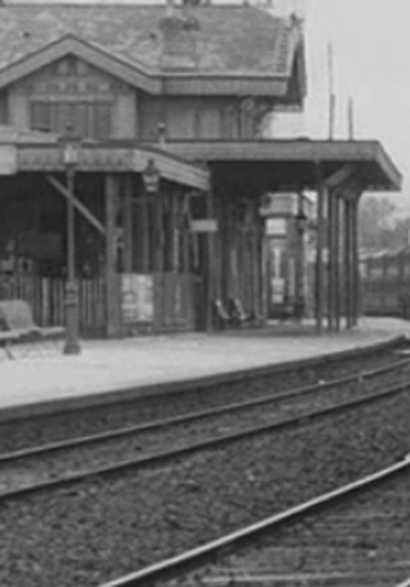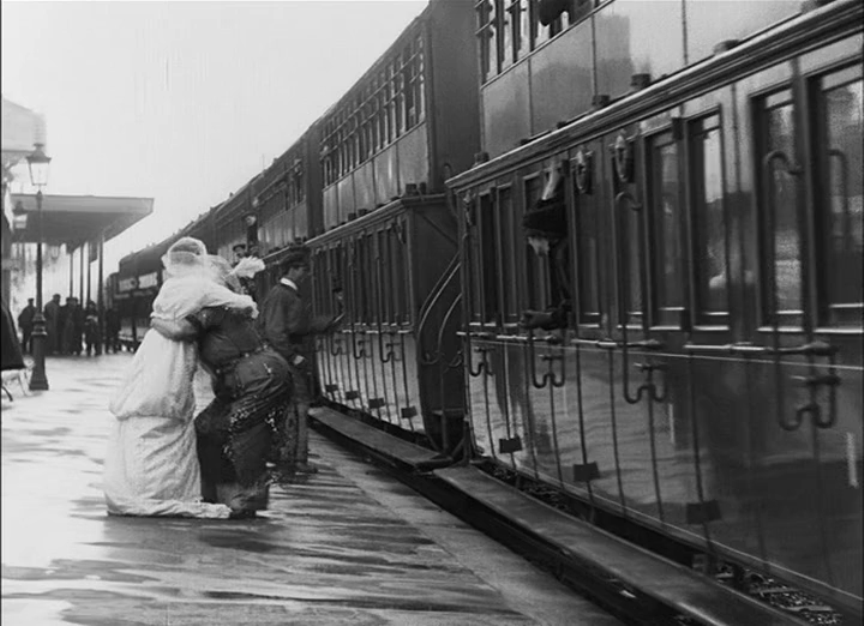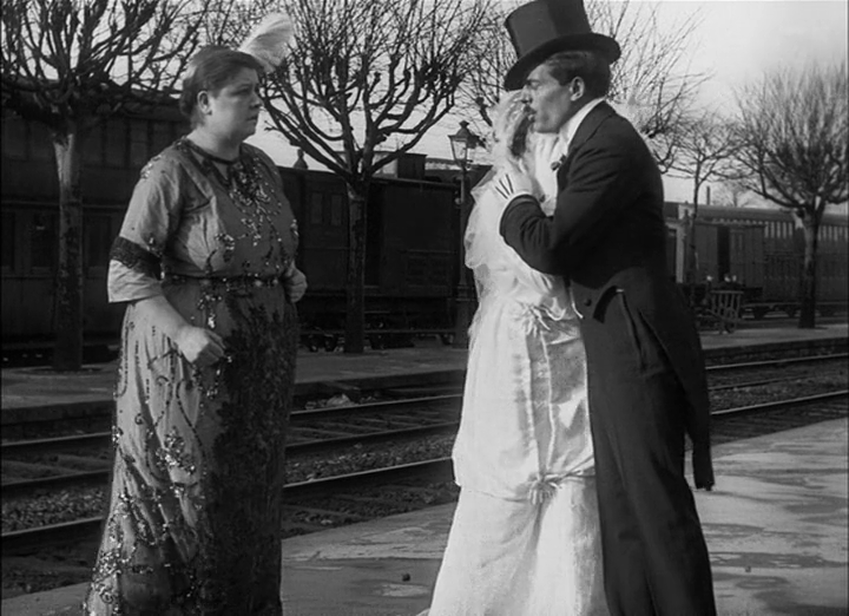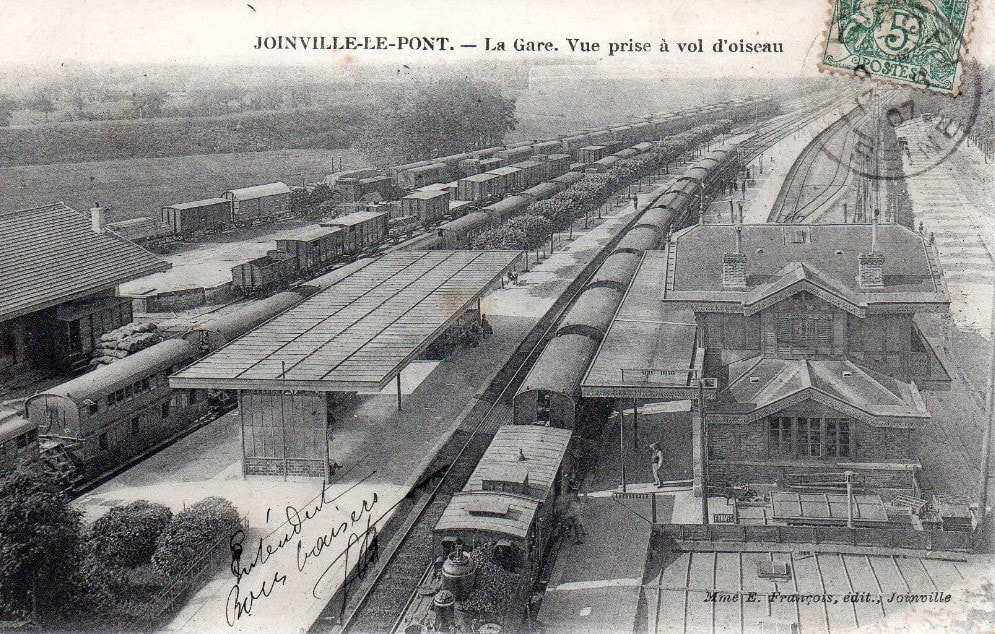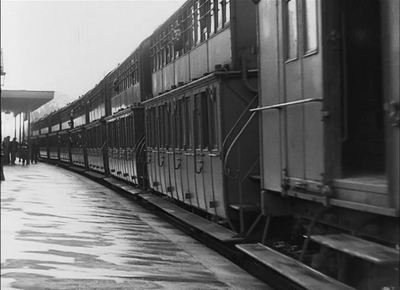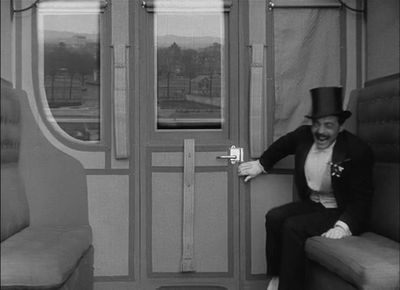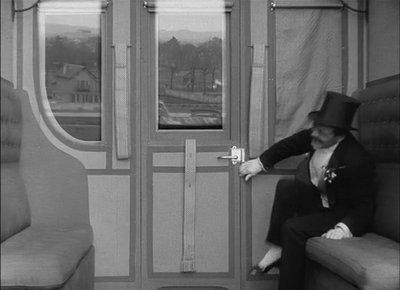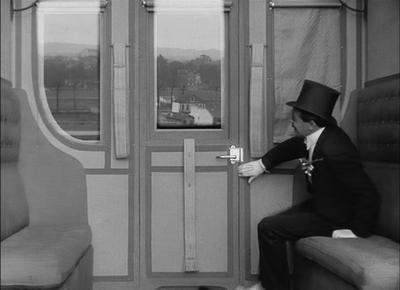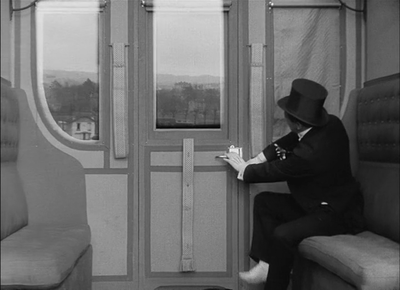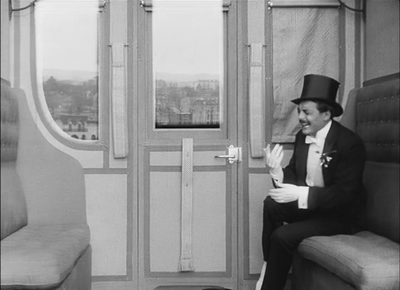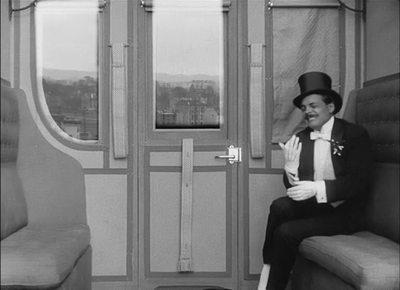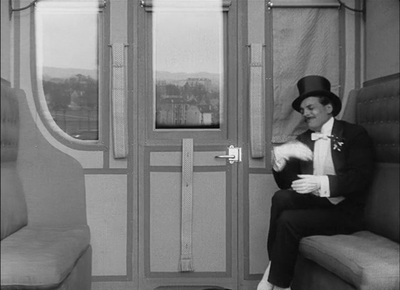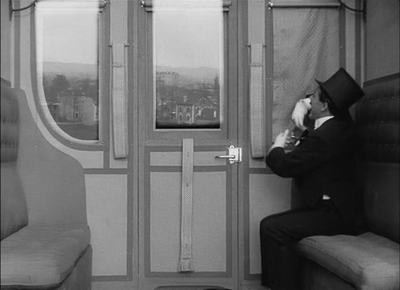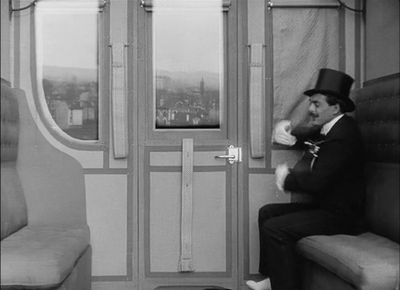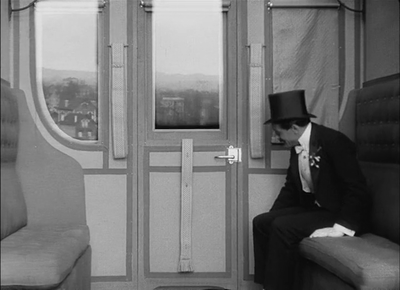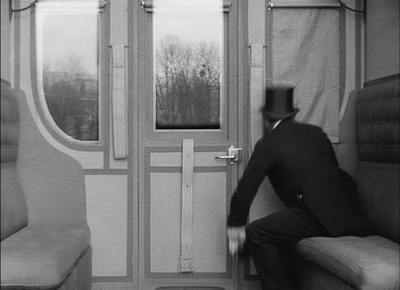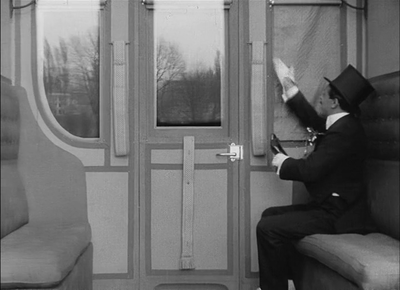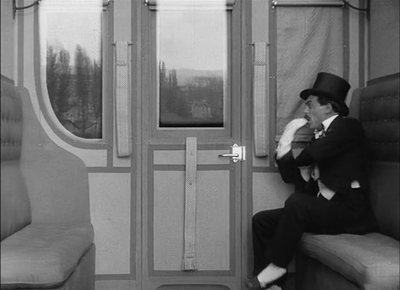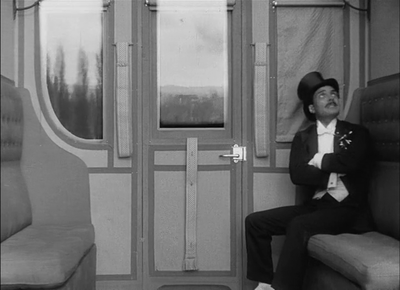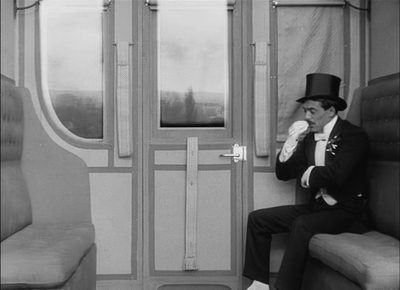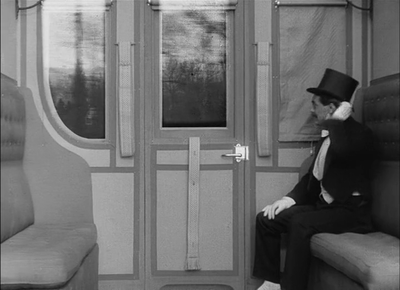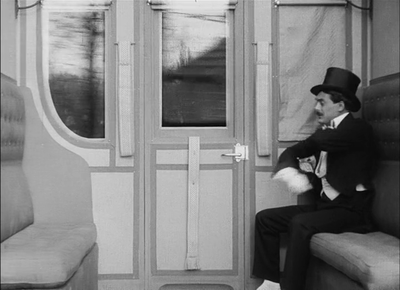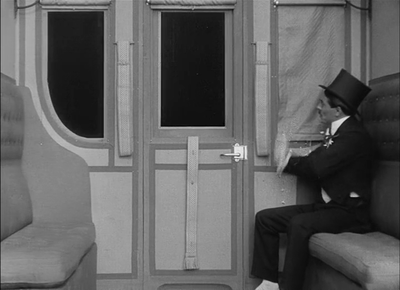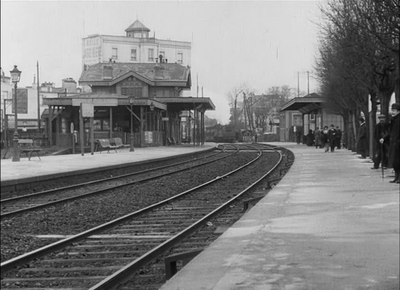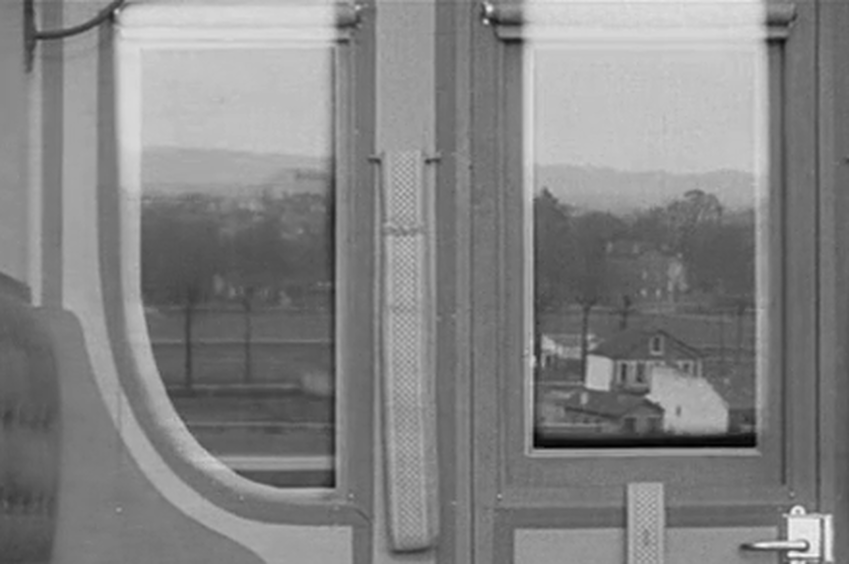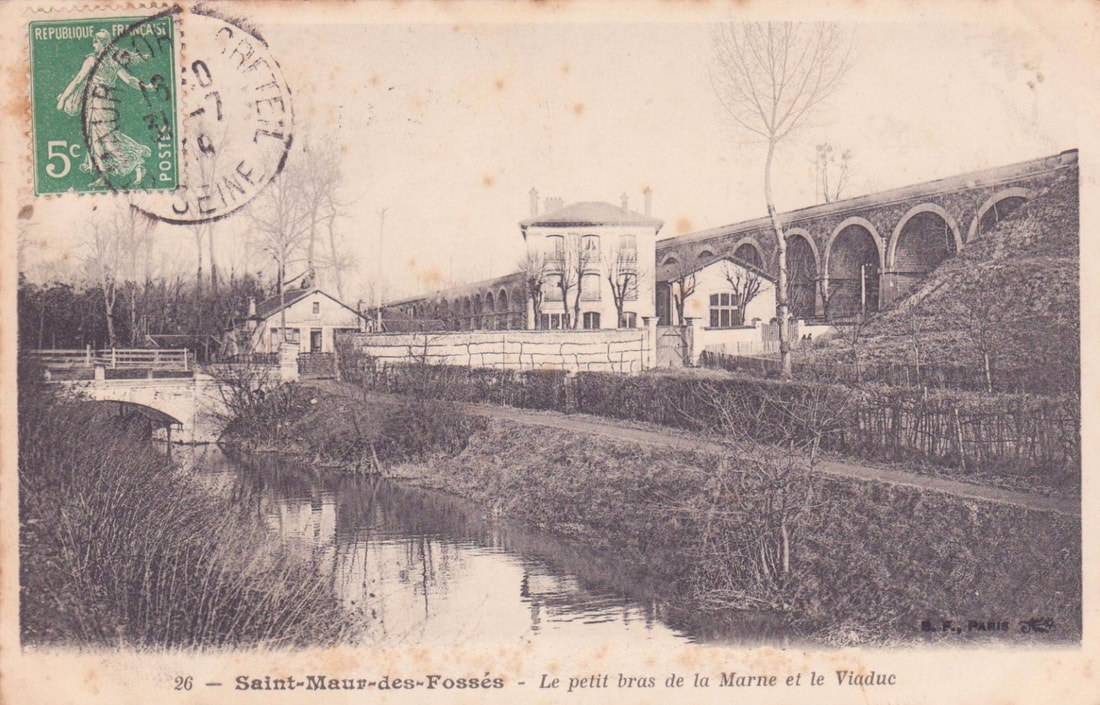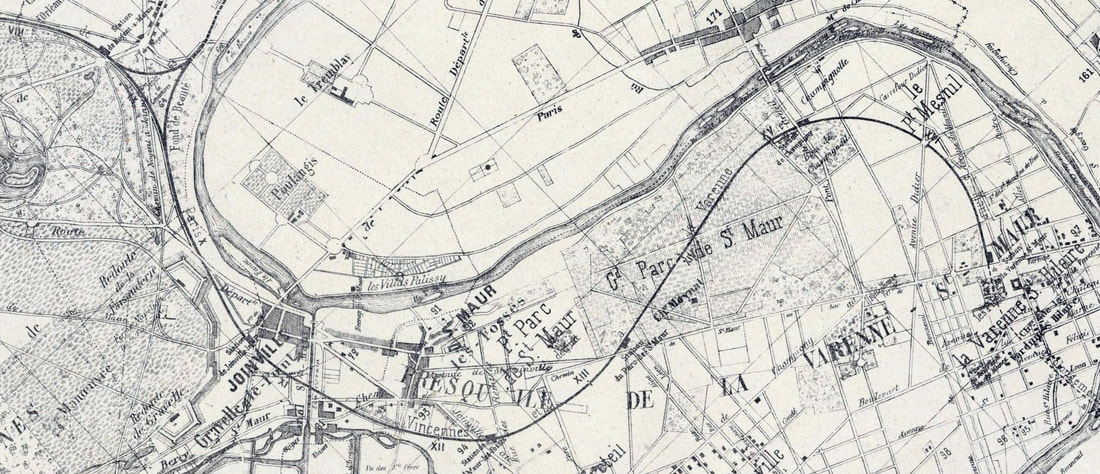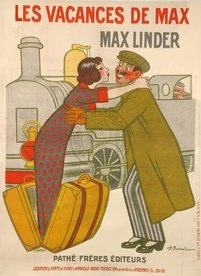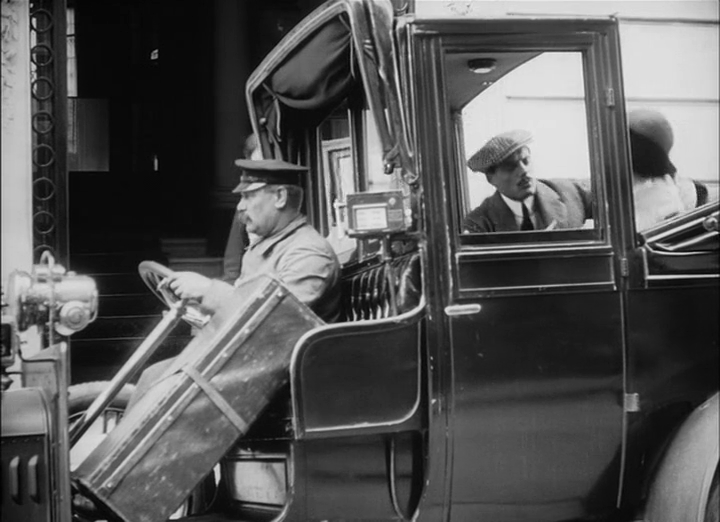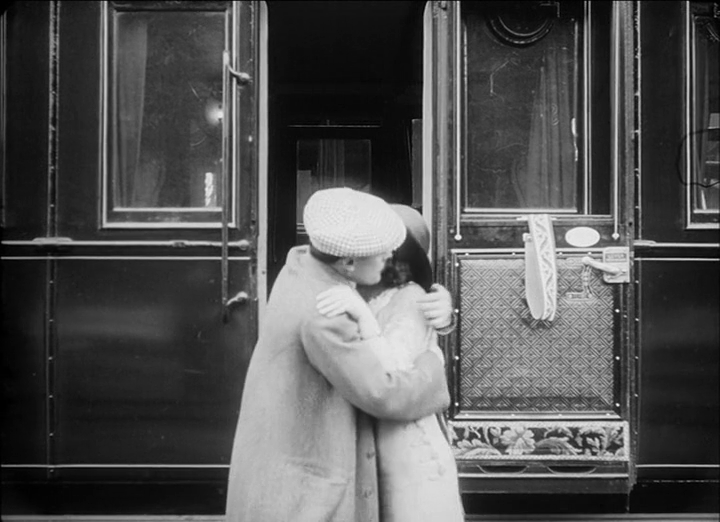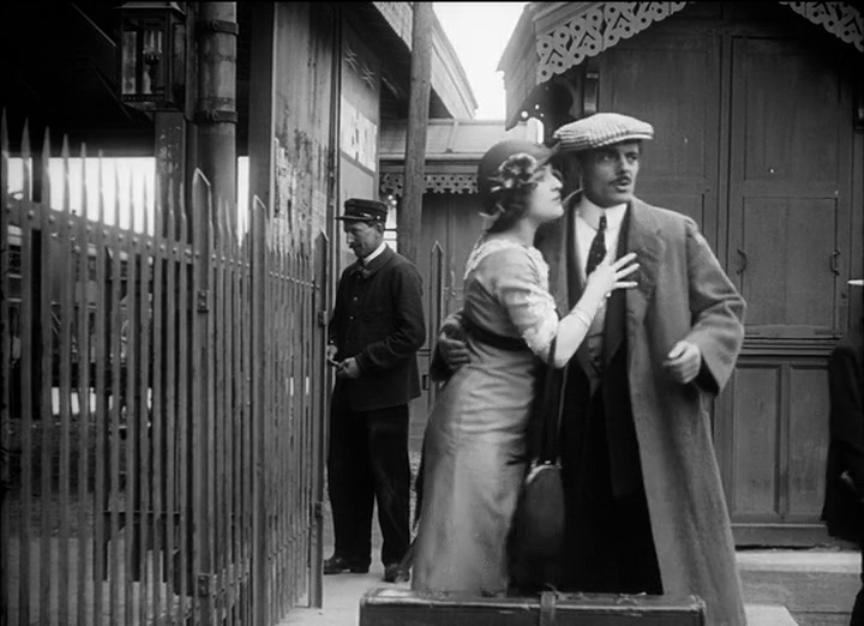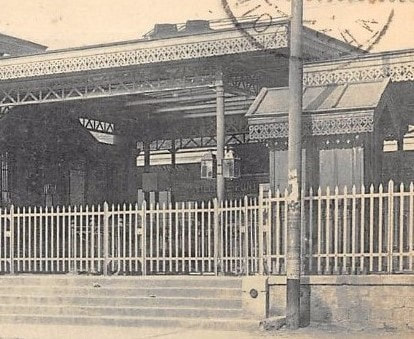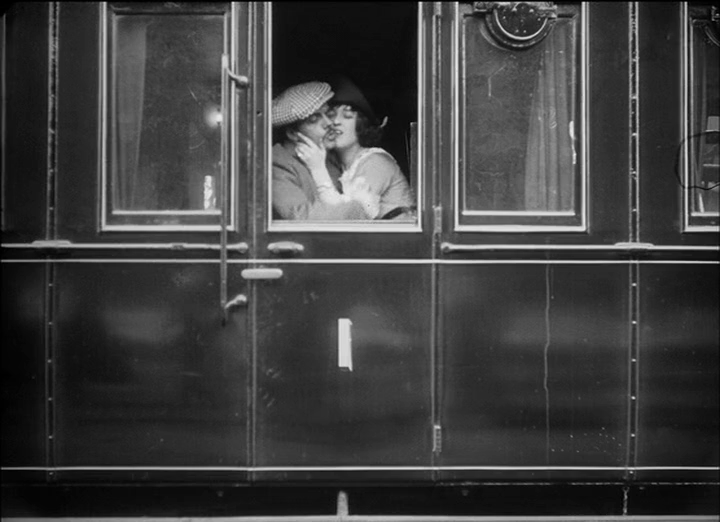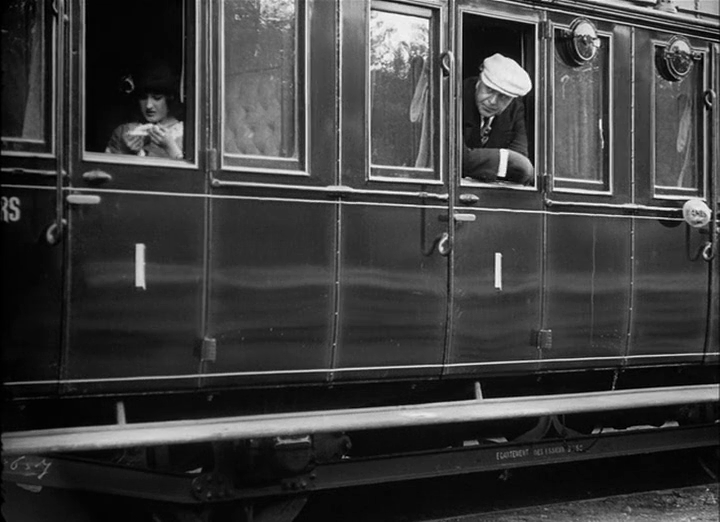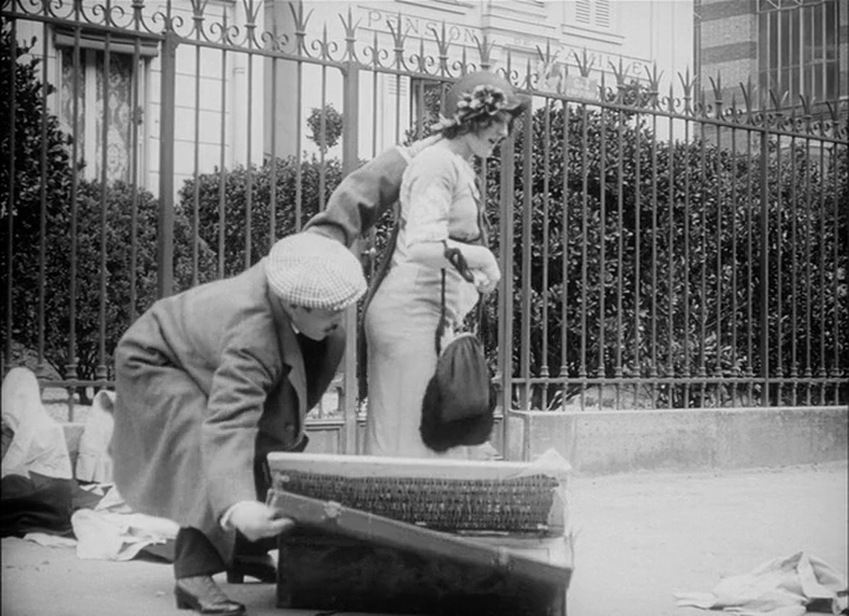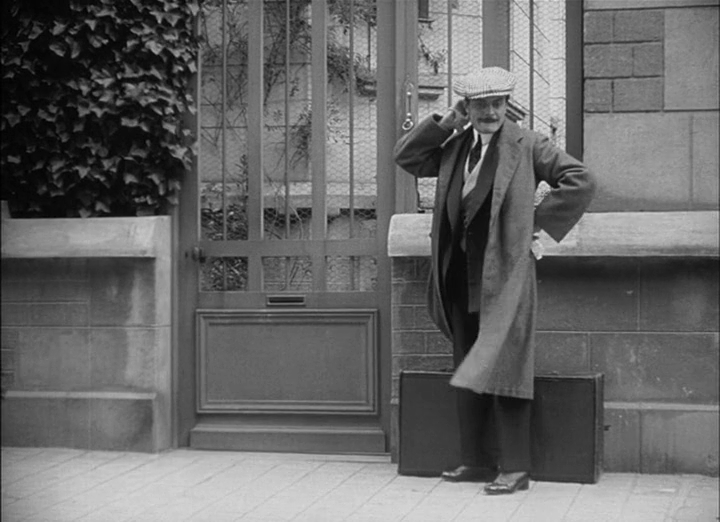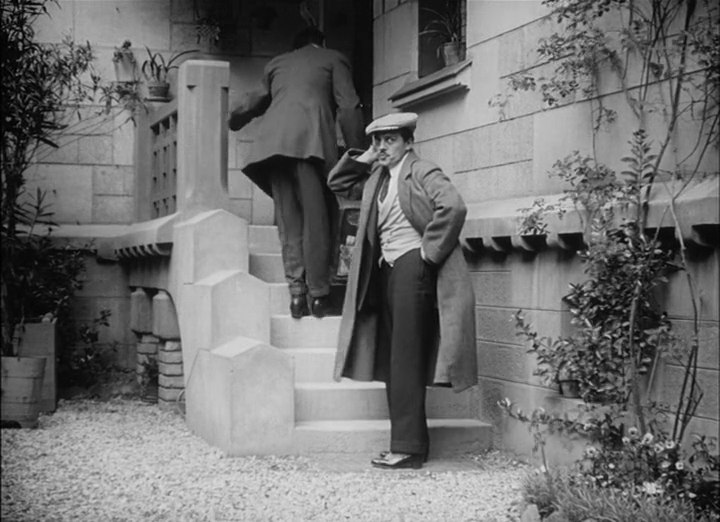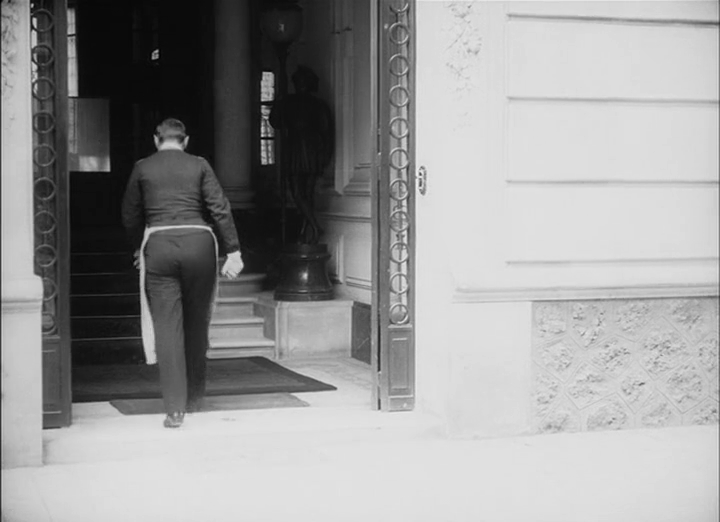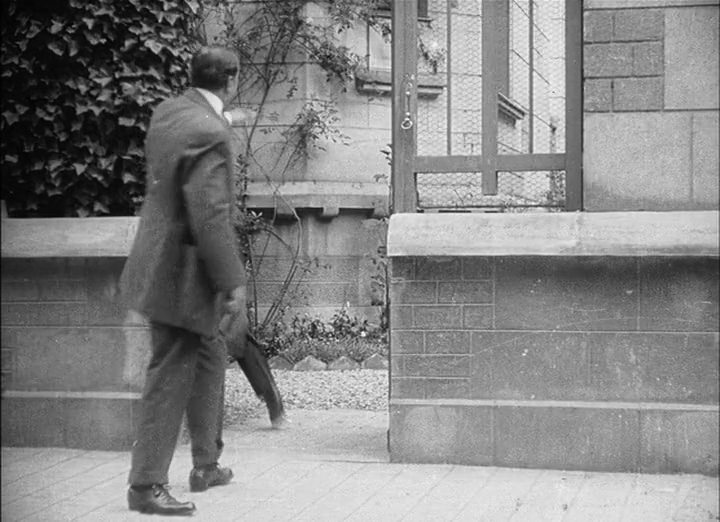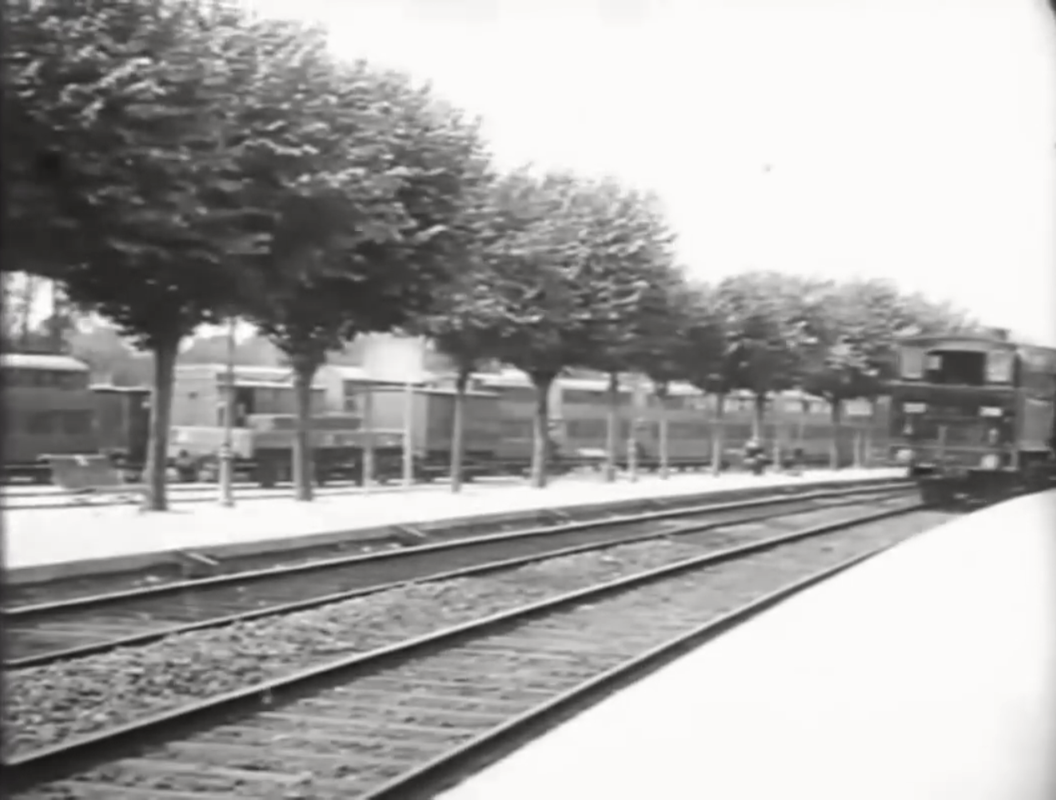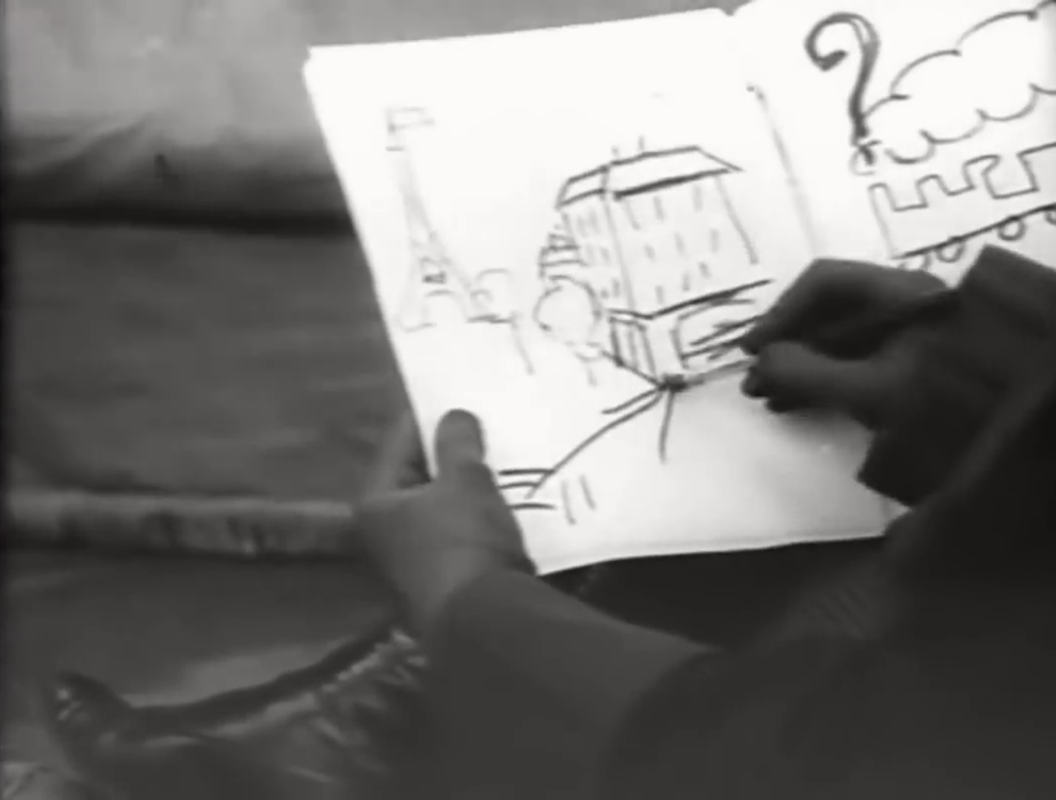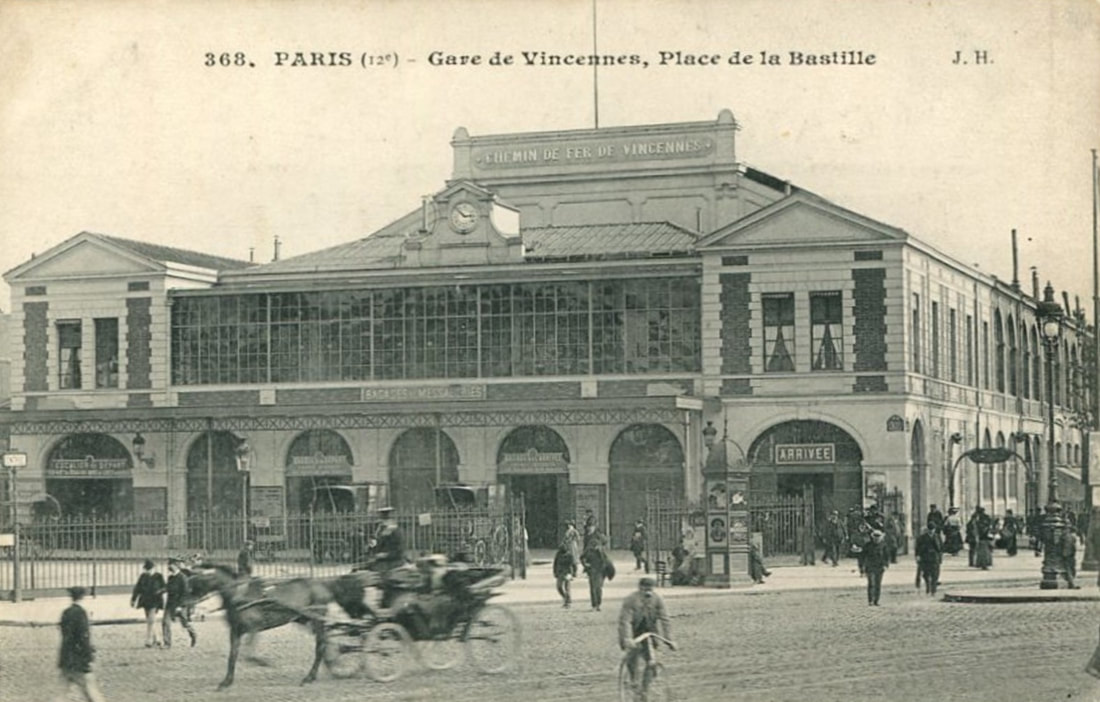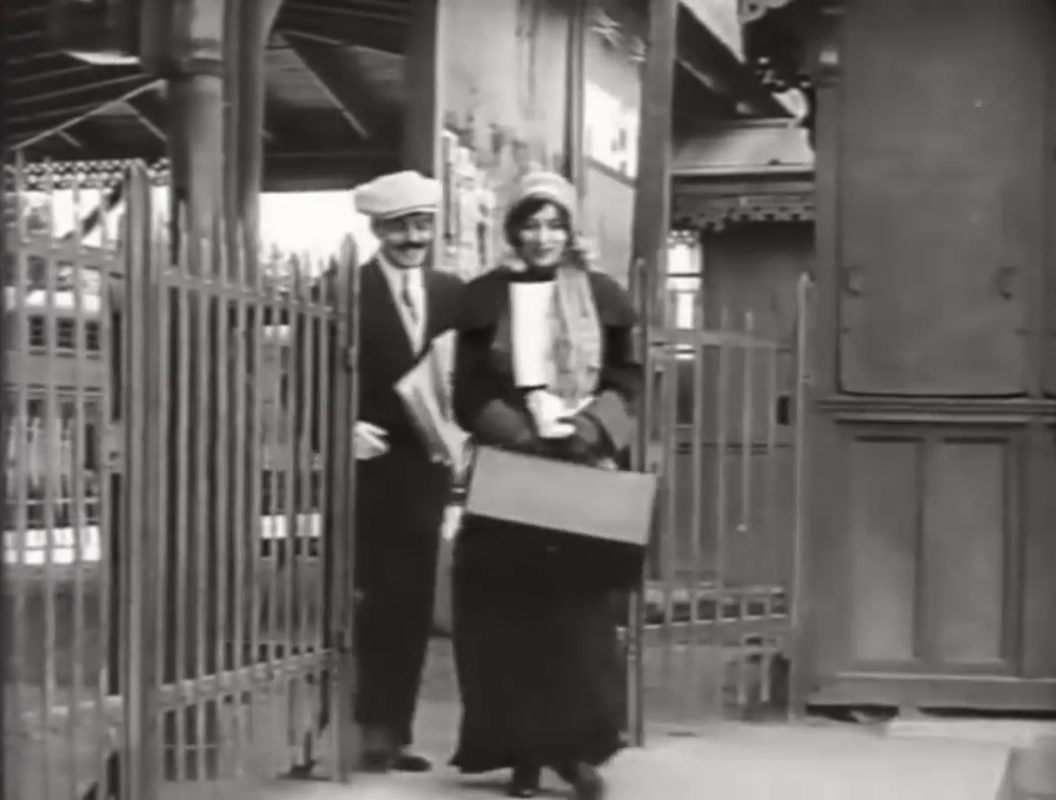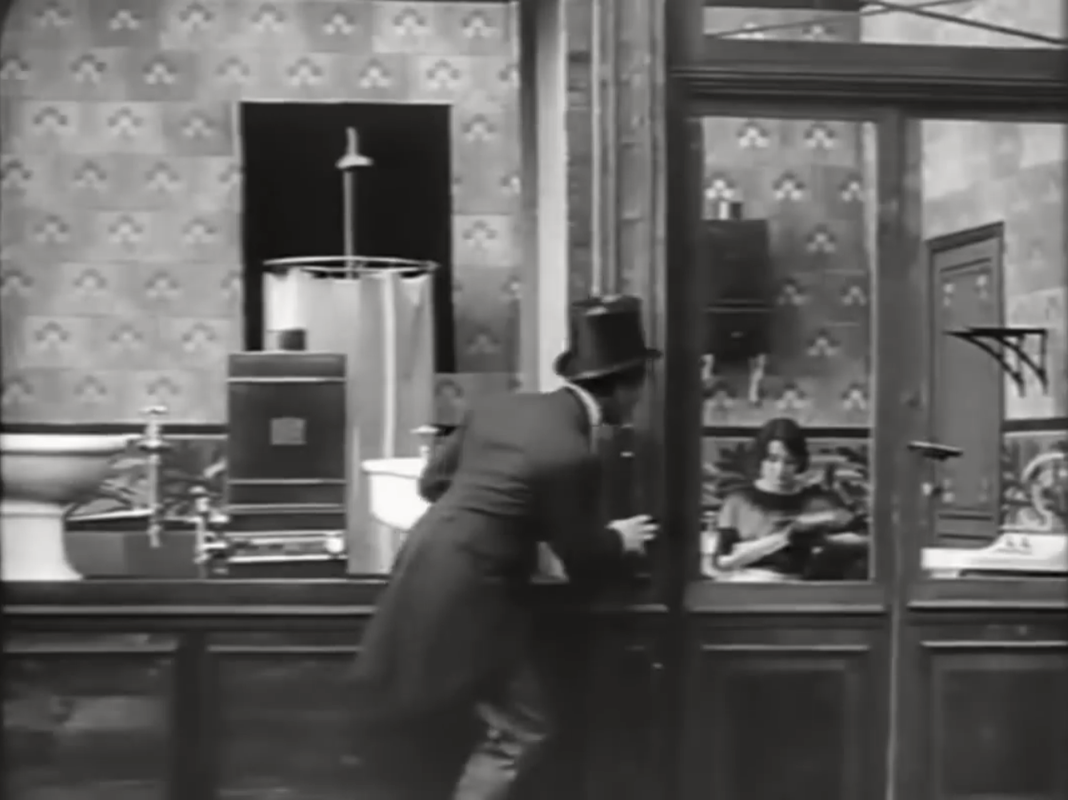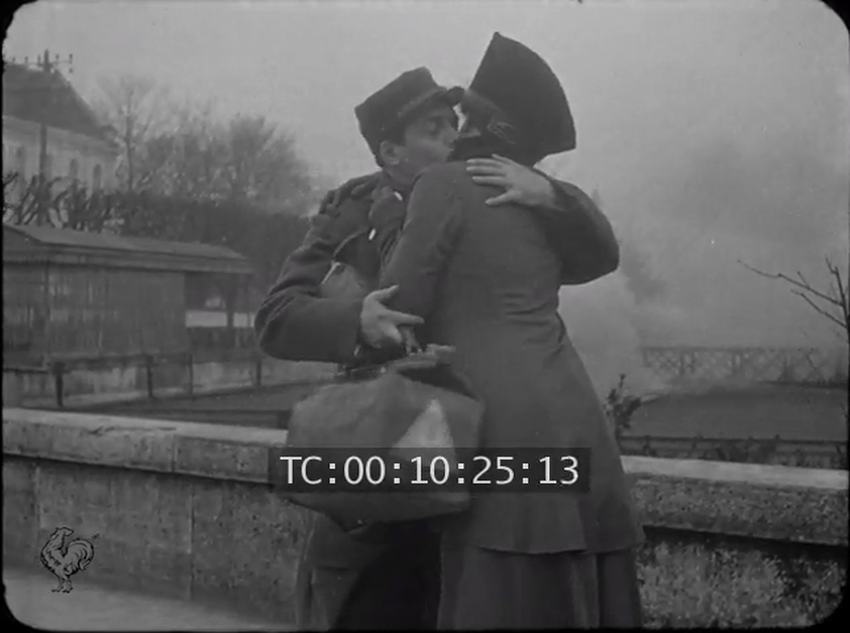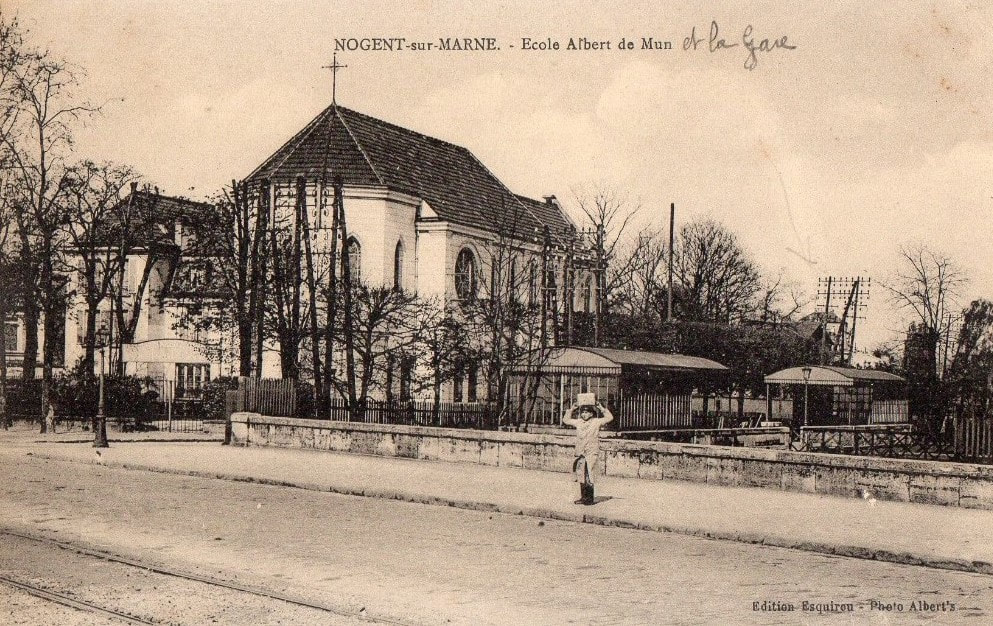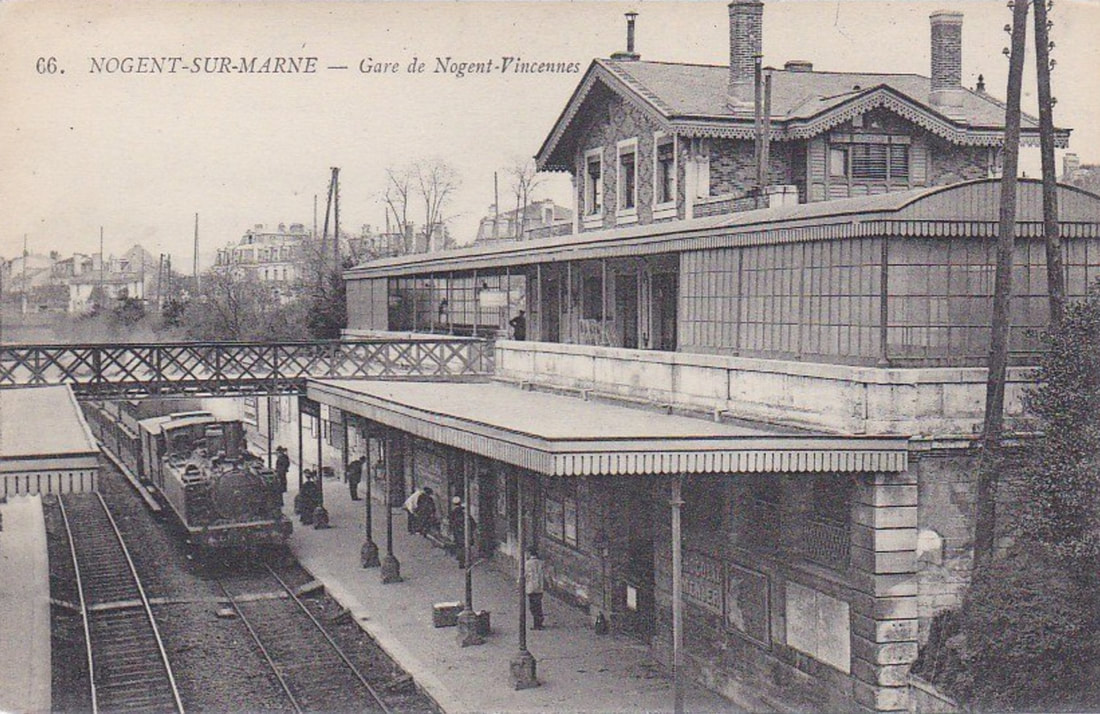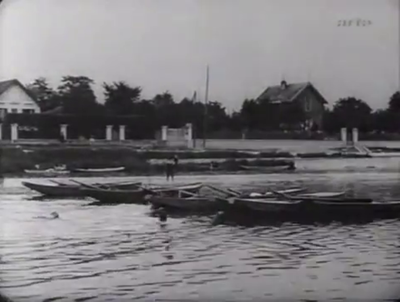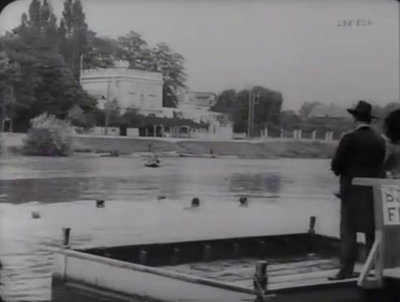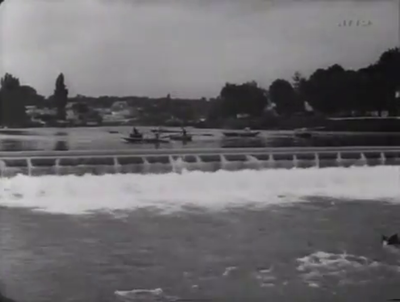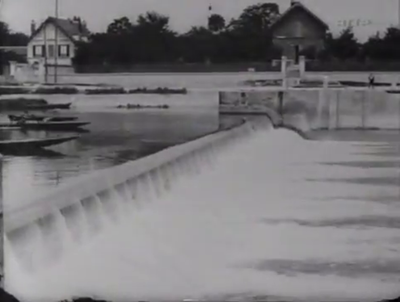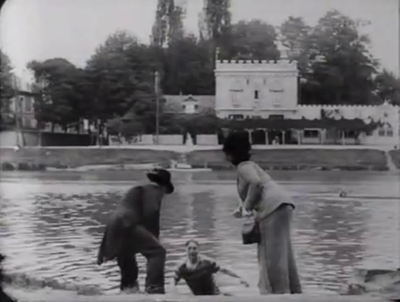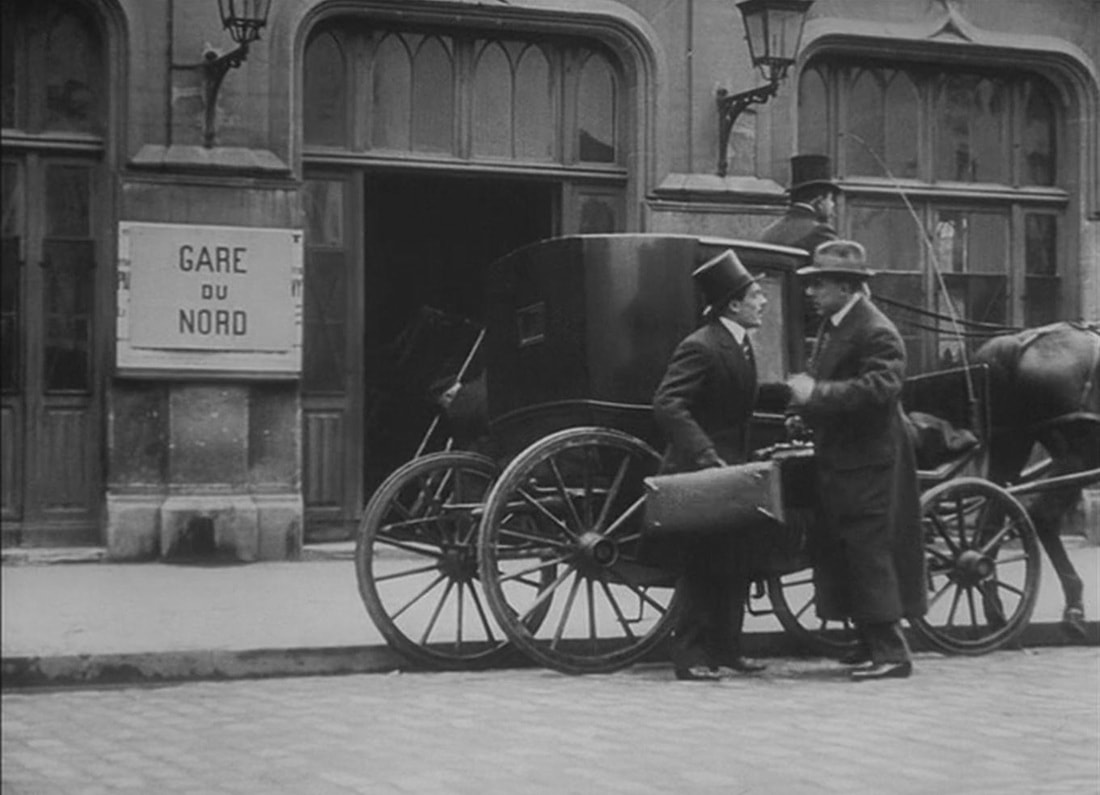|
Max takes the train
|
|
When Max Linder goes on holiday he generally takes the train. Max en convalescence (1911) shows him arriving at Saint-Loubès, near Bordeaux, and there is no doubt that this is a film fully shot at the actual locations:
This is where Max Linder was brought up, and the film is shot in and around the family home, with his parents and sister in the cast.
In L'Amour tenace Max secretly follows his beloved and her father when they go by train to the Alps, arriving at Saint Gervais:
The father discovers Max and hires another train to take his daughter to Chamonix, reserving every place so Max cannot follow them. Max is able to follow the train to Chamonix by attaching a donkey to the back of the train and riding along behind it:
Actually - and here I'm getting to the point of this post - when we see Max attaching the donkey to the train, they are already in Chamonix. We can recognise well-known Chamonix hotels in the background:
Little effort is made to support topographically the fiction that Max rides behind the train from Saint Gervais to Chamonix - almost twenty-four kilometres - since when the train that is supposed to be at Saint Gervais pulls away we see a station sign with the name of the train's destination:
In Max et sa belle-mère (1915) Max returns by train to Chamonix on his honeymoon, with his wife and, to Max's regret, his mother-in-law. This time there are no topographical contretemps, at least not once they are in the mountains:
In this film Max repeats the gag from L'Amour tenace with the donkey attached to a train, this time with his mother-in-law on the donkey. The gag is filmed on exactly the same stretch of track as before, from almost exactly the same position:
|
Before Max and his wife and his mother-in-law arrived at Chamonix there was much train-related business around Max's attempt to get away with his wife and away from her mother. She follows the couple from their home (see here for more on where Max lives) and drags the bride from the departing train, leaving Max stuck in the compartment until the train reaches the next station. From there Max runs back up the track to the previous station and finds his wife and mother-in-law still on the platform:
|
|
This is comparable to the comic business in L'Amour tenace that connects two stations along the same line, Saint Gervais Le Fayet and Chamonix, though here no actual place names are given.
Since Max lives in Vincennes that should be the first station, though the platform in the first image above doesn't match the one here, right: |
The distinctive station buildings in the second image should normally make
identification easy, but they in fact they conform to a pattern used several times for stations on the ligne de Vincennes. These three very similar stations are successive stops after Vincennes:
identification easy, but they in fact they conform to a pattern used several times for stations on the ligne de Vincennes. These three very similar stations are successive stops after Vincennes:
The last of these, at Joinville-le-Pont, is the station in Max et sa belle-mère, identifiable from the cupola on the building behind the station:
Though I have no photographic evidence that the view of Max running back up the tracks is at this same station, logic inclines me to think so, not least because there is photographic evidence that locates the other two views in this train sequence at Joinville-le-Pont. In the shot where the bride's mother removes her from the train we can see details that match the left side platform in the image above:
When Max returns to find his wife and mother-in-law at the station where he had left them they are on a different platform:
The trees behind them are a clue that this is still Joinville-le-Pont. Of all the similar stations in the area Joinville is, as far as I can see, the only one with trees on the platforms. This bird's eye view also shows the scale of the station, which made it logical to film the various parts of this sequence here:
Between the shot where Max is stuck on the train as it leaves Joinville-le-Pont and the shot where he gets out when the train stops at Joinville-le-Pont there is a single forty-second shot showing a vexed Max in the carriage, as the train speeds between the two stations:
I don't know this stretch of the ligne de Vincennes c. 1914 well enough to say whether this is the approach to Joinville-le-Pont or not, but I don't see why it shouldn't be. On the other hand, the high vantage point over the landscape suggests to me that the shot could have been taken from the viaduct that carries the train after Joinville-le-Pont into the presqu'île de La Varenne Saint Maur:
|
Max had travelled to the station at Joinville-le-Pont on at least two previous occasions. In Les Vacances de Max (1913) he takes the train from his home in Vincennes - the rue Louis Besquel again, but this time no. 20 - to visit his uncle in the countryside. Max has concealed his marriage from his uncle, so his wife cannot go with him. At the station we only see the carriage he gets into, in which he is eventually joined by his wife who cannot bear to be parted from him: |
From the shot of their train arriving at its destination we can identify it as Joinville-le Pont. The cupola on the building behind the station is just visible:
And when Max and his wife leave the station the exit matches the exit at Joinville:
Given what would be the practice two years later in Max et sa belle-mère, I am guessing that the departure scene was also filmed at the place of arrival, and that the whole sequence was filmed at Joinville-le-Pont.
Curiously, between the two scenes Max and his wife have changed compartment:
Curiously, between the two scenes Max and his wife have changed compartment:
Where exactly Max's uncle is supposed to live is not specified. After leaving Joinville station Max puts his wife in his suitcase on the avenue des Minimes in Vincennes, right next to the Pathé studios:
From here Max carries his suitcase, with his wife in it, to his uncle's house, at 21 rue Louis Besquel (merci Denis):
This is the house immediately opposite no. 20 rue Louis Besquel, the house Max and his wife had left at the beginning of the film. The circularity of their journey is a topographical joke that could be appreciated only by viewers familiar with the peculiar architecture of the houses on the rue Louis Besquel. At the time that would mostly be employees of the Pathé company.
In L'Anglais tel que Max le parle (1913), Max boards a train at a station that we now, from the trees on its platform, recognise straightway as Joinville-le-Pont:
In the train Max makes a liaison with an American woman, overcoming their ignorance of each other's language through drawings. The train with a question mark is how Max asks where she lives; her reply says that she lives in a building near the Eiffel Tower:
|
The train stops at a platform strangely similar to the one at which Max got on, and the two of them leave by an exit that matches the station exit in Les Vacances de Max, so this is again Joinville-le Pont, though we are supposed to think this is Paris.
It certainly isn't the terminus of the Ligne de Vincennes at the place de la Bastille: |
A few days later, following the woman's indications in her drawing, Max heads for the Eiffel Tower to find her in her father's shop:
(The first of these is a real location, the second is a set.)
The 1916 film Deux août 1914 is a response to the outbreak of war on that date. The climax shows Max's tearful mother seeing him off at the station as he joins other newly enlisted soldiers:
This is not, for once, Joinville-le-Pont but the architecturally similar Nogent-sur-Marne, the preceding stop on the line. I think this film went to Nogent rather than Joinville because of the solid stone bridge over the tracks. At Joinville there was only a metal footbridge, an unfeasible setting for the scene, and suggestive of a frailty inapt in the context. Here is a postcard view of that bridge, and a view taken from it of the station:
Max was not a frequent visitor to Nogent-sur-Marne, though other Pathé productions (Histoire d'un pantalon, Les Débuts d'un chauffeur, Le Cheval emballé, Calino a mange du cheval) did feature Nogent locations. When Max partakes in sporting activities on the Marne he goes again to Joinville:
(This film, Max pratique tous les sports (1913), doesn't specify that he gets to Joinville by train, so it doesn't fit the remit of this post. To close, a reminder that Max does occasionally use the station nearest to his residence in Vincennes. In Entente cordiale he goes to meet his friend Fragson at the Gare du Nord, though what we see is a poorly disguised Gare de Vincennes:
This film is discussed in more detail in my post When Harry Met Max, and Where. For more on Max in Vincennes, see Where's Max?
